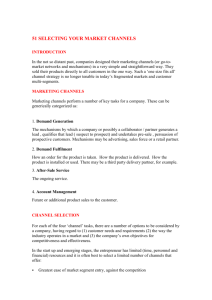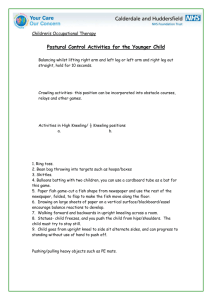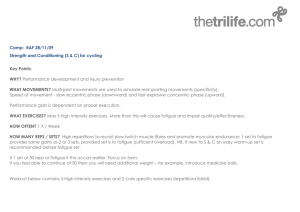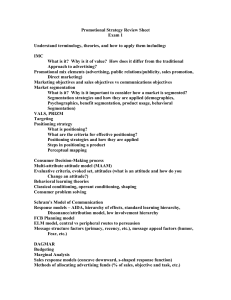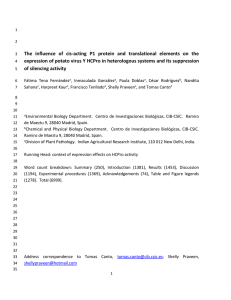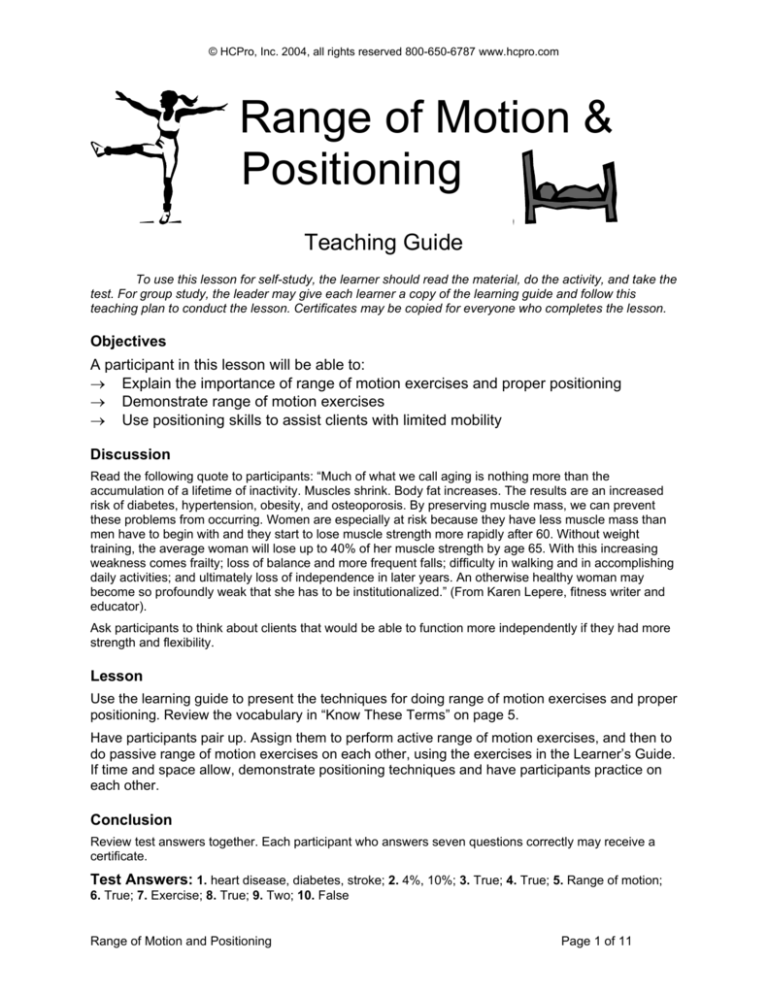
© HCPro, Inc. 2004, all rights reserved 800-650-6787 www.hcpro.com
Range of Motion &
Positioning
Teaching Guide
To use this lesson for self-study, the learner should read the material, do the activity, and take the
test. For group study, the leader may give each learner a copy of the learning guide and follow this
teaching plan to conduct the lesson. Certificates may be copied for everyone who completes the lesson.
Objectives
A participant in this lesson will be able to:
→ Explain the importance of range of motion exercises and proper positioning
→ Demonstrate range of motion exercises
→ Use positioning skills to assist clients with limited mobility
Discussion
Read the following quote to participants: “Much of what we call aging is nothing more than the
accumulation of a lifetime of inactivity. Muscles shrink. Body fat increases. The results are an increased
risk of diabetes, hypertension, obesity, and osteoporosis. By preserving muscle mass, we can prevent
these problems from occurring. Women are especially at risk because they have less muscle mass than
men have to begin with and they start to lose muscle strength more rapidly after 60. Without weight
training, the average woman will lose up to 40% of her muscle strength by age 65. With this increasing
weakness comes frailty; loss of balance and more frequent falls; difficulty in walking and in accomplishing
daily activities; and ultimately loss of independence in later years. An otherwise healthy woman may
become so profoundly weak that she has to be institutionalized.” (From Karen Lepere, fitness writer and
educator).
Ask participants to think about clients that would be able to function more independently if they had more
strength and flexibility.
Lesson
Use the learning guide to present the techniques for doing range of motion exercises and proper
positioning. Review the vocabulary in “Know These Terms” on page 5.
Have participants pair up. Assign them to perform active range of motion exercises, and then to
do passive range of motion exercises on each other, using the exercises in the Learner’s Guide.
If time and space allow, demonstrate positioning techniques and have participants practice on
each other.
Conclusion
Review test answers together. Each participant who answers seven questions correctly may receive a
certificate.
Test Answers: 1. heart disease, diabetes, stroke; 2. 4%, 10%; 3. True; 4. True; 5. Range of motion;
6. True; 7. Exercise; 8. True; 9. Two; 10. False
Range of Motion and Positioning
Page 1 of 11
© HCPro, Inc. 2004, all rights reserved 800-650-6787 www.hcpro.com
Range of Motion &
Positioning
Learning Guide
Why Is Motion Important?
Most people take free,
comfortable movement for granted.
Motion is meant to be smooth and
painless. The ligaments, tendons,
muscles, and joint capsules that
surround each joint in the body work
best if they are used regularly.
As people get older, however,
muscles gradually lose their strength,
endurance, and flexibility. We
experience a progressive loss of muscle
mass at an average rate of 4% per
decade from 25 to 50 years and 10%
per decade thereafter. In addition, the
joints in older people change, often
becoming stiff and difficult or painful to
move. Tissues in the joints sometimes
become swollen or inflamed, hindering
movement and making the joints more
prone to injury.
As a result, people tend to move
less as they age. This is the worst
thing we can do. Lack of activity
worsens the changes that occur with
aging. Research confirms that regular
exercise can slow or reverse many
changes associated with the age-related
loss of strength, endurance, and
flexibility.
Range of Motion and Positioning
When people are not physically
active, every cell and system in the body
is affected. The body’s cells and
systems begin to lose the ability to
perform their specialized functions.
When movement is difficult,
people experience a general
decline in quality of life. Selfimage often suffers.
Lack of activity and
exercise can lead to heart
disease, diabetes, stroke,
and other health problems.
Decreased mobility hinders
one’s ability to feed
and clothe oneself,
to grocery shop, and
to attend to personal
hygiene. It promotes mental
deterioration and loss of independence.
In addition, when muscles are not
used they continue to weaken. Muscle
weakness increases the risk of falls,
and, therefore, of fractures. The risk of
falling increases with age. Falls are the
leading cause of injury death for people
ages 65 and older.
Page 2 of 11
© HCPro, Inc. 2004, all rights reserved 800-650-6787 www.hcpro.com
What Kinds of Motion Are Best?
There are four types of exercise:
→
→
→
→
strength
stretching
endurance (also known as cardiovascular)
range of motion
Exercise
benefits
people of
all ages.
Exercise benefits people of all ages. Regular exercise can slow or
reverse decreased mobility that contributes to disease and disability in the elderly.
Strength
Even a small change in muscle size can make a big difference in
strength. That’s why strength exercises are so important.
Improving muscle size by lifting small weights helps people build
their capacity to do such things as walk, climb stairs, and carry a
package. These kinds of activities can mean the difference
between keeping one’s independence and relying on others.
Stretching
Stretching exercises that gently stretch the
muscles and tendons help ensure flexibility.
Stretching exercises do not build strength or endurance. Clinical
research has demonstrated that most elderly, even the frail, benefit
from a combination of flexibility and strengthening exercises. It helps
them maintain function and mobility, prolong independence, and
improve their quality of life.
Endurance
Walking, running, bicycling, and swimming are examples of endurance
exercise. By spending time in motion the body and muscles become
able to endure for longer periods of time, and the heart and lungs
become stronger.
Range of Motion
Range of motion exercises are designed to increase flexibility.
Range of motion (ROM) is the normal amount a person’s joints can be moved in
certain directions, or the range in which you can move a body part around a joint.
Limited range of motion is a reduction in the normal distance and direction through
which a joint can move.
When a joint is not fully extended on a regular basis, over time it will become
permanently unable to extend beyond a certain fixed position. To keep the joints,
tendons, ligaments, and muscles loose and flexible, ROM exercises are used. These
exercises move the joints through a full range of motion, helping to prevent stiffening.
Range of Motion and Positioning
Page 3 of 11
© HCPro, Inc. 2004, all rights reserved 800-650-6787 www.hcpro.com
Getting Started
By doing a little exercise
regularly, even in small ten-minute
increments several times a week, it’s
possible to offset a variety of health
problems. Exercise can help produce
new red blood cells, strengthen the
immune system, and improve bone
density. Physical activity, even at low
intensity in short sessions, may reduce
the risk for certain chronic diseases.
Exercise also helps relieve depression.
Older adults need to
be up and moving
seven days a week.
They should spend
time 3-5 days a week
doing flexibility
exercises or walking.
Daily activities do not
move joints through
their full ROM.
Daily
activities
do not
move
joints
through
their full
range of
motion.
Caregivers can help
clients improve their health by
encouraging them to exercise.
Exercise Tips
→
Move joints through their full range of motion 1-2 times a day.
→
Do each exercise 3-10 times.
→
Move slowly. Do not bounce.
→
Breathe while you exercise. Count aloud.
→
Begin exercises slowly, doing each exercise a few times and
gradually building up.
→
Try to achieve full range of motion by moving until you feel a slight stretch, but
don’t force a movement.
→
Stop exercising if you have severe pain.
→
Encourage clients with limited mobility to bear weight during transfers
from bed to chair, and to walk whenever possible.
Range of motion exercises that can be done while seated
• Neck (Breathe with the movements, breathing out when the head moves down,
breathing in when it moves up. Don’t let shoulders or upper body sway to the side.)
1. Turn head slowly to the right, then to the left. Repeat three to four times.
2. Tilt head toward one shoulder, then toward the other shoulder. Repeat 3-4 times.
•
Arms & Shoulders
1. Raise shoulders up toward ears and hold. Make full circles: up, forward, down,
and back.
2. Take a deep breath, extend arms overhead. Exhale slowly, dropping arms.
•
Hands & Fingers
1. Massage each hand, one at a time. Take your time; go in between each finger.
2. Raise hands up and back. Slowly rotate hands down and around in circles.
3. Close hand in a fist. Open hands fully, stretching fingers and thumbs out wide.
Range of Motion and Positioning
Page 4 of 11
© HCPro, Inc. 2004, all rights reserved 800-650-6787 www.hcpro.com
•
Chest and Upper Body
1. With hands on waist, tilt to the right, return to center, then tilt to the left and return
to center. Exhale as the movement goes down; inhale as the movement comes
up. Don’t allow upper body to tilt forward. Don’t try to hold head up; instead, let it
relax to the side.
2. Sit straight in chair with hands on your hips. Gently rock hips from side to side.
•
Legs
1. Raise right leg up and forward. Repeat with left leg.
2. Sit up straight, knees together, with legs extended forward as far as possible,
keeping feet on floor. Slowly stretch forward, sliding both hands down to ankles.
Hold 10-15 counts.
3. Grasp one knee with both arms, pull to chest, and hold for five counts. Repeat
with opposite leg.
•
Ankle and Foot
1. Point toes toward floor. Point toes toward ceiling. Slowly rotate feet in circles.
2. Cross right leg over left knee. Rotate foot slowly, making large complete circles—
ten rotations to the right, ten to the left. Repeat for left leg.
Passive Range of Motion Exercises
When an individual is able to perform range of motion exercises with minimal
assistance, the person is doing active range of motion. When an individual is unable to
perform range of motion exercises, a caregiver should move the person’s joints in
passive range of motion exercises at least once or twice a day.
Use the chart on page 6 to guide you in moving every joint in the body through its
full range of motion. Go slowly and be very gentle. Do not force any body part to move
in any way that creates resistance or causes discomfort.
Know These Terms
Flexion: forward bending
Extension: straighten out
Hyperextension: backward bending
Lateral flexion: sideways bending
Internal Rotation: turn toward the body
External Rotation: turn away from the
body
Circumduction: move in a circle
Range of Motion and Positioning
Abduction: move away from the body
(think of “abduct,” or “take away”)
Adduction: move toward and/or across
the body (think “add to the body”)
Inversion: move or twist inward
Eversion: move or twist outward
Supination: turn or lie upward; face up
Pronation: turn or lie downward; face
down
Page 5 of 11
© HCPro, Inc. 2004, all rights reserved 800-650-6787 www.hcpro.com
Part
Neck
Shoulder
Elbow
Forearm
Wrist
Fingers
Thumb
Hip
Knee
Ankle
Foot
Toes
Type
Flexion
Extension
Hyperextension
Lateral flexion
Rotation
Flexion
Extension
Hyperextension
Abduction
Adduction
Internal rotation
External rotation
Circumduction
Flexion
Extension
Supination
Pronation
Flexion
Extension
Hyperextension
Abduction
Adduction
Flexion
Extension
Hyperextension
Abduction
Adduction
Flexion
Extension
Abduction
Adduction
Opposition
Flexion
Extension
Hyperextension
Abduction
Adduction
Internal rotation
External rotation
Circumduction
Flexion
Extension
Dorsal flexion
Plantar flexion
Inversion
Eversion
Flexion
Extension
Abduction
Adduction
Action for Full Range of Motion
Bring chin to rest on chest
Return head to erect position
Bend head back as far as possible
Tilt head as far as possible toward each shoulder
Turn head as far as possible in a circular movement
Raise arm from side position forward to position above head
Return arm to position at side of body
Move arm behind body, keeping elbow straight
Raise arm from side to position above head with palm away from head
Lower arm sideways and across body as far as possible
With elbow flexed, move arm down until thumb is turned in and toward back
With elbow flexed, move arm up until thumb is upward and even with head
Move arm in full circle
Bend elbow so lower arm moves toward shoulder and hand is level with
shoulder
Straighten elbow by lowering hand
Turn lower arm and hand so palm is up
Turn lower arm so palm is down
Move palm toward inner aspect of forearm
Move fingers so fingers, hands, and forearm are in same plane
Bring back surface of hand back as far as possible
Bend wrist toward thumb
Bend wrist toward fifth finger
Make fist
Straighten fingers
Bend fingers back as far as possible
Spread fingers apart
Bring fingers together
Move thumb across palm of hand
Move thumb straight away from hand
Spread thumb apart from fingers
Move thumb back toward hand
Touch thumb to each finger of same hand
Move leg forward and up
Move leg back beside other leg
Move leg behind body
Move leg away from body
Move leg back toward other leg and beyond, across other leg if possible
Turn foot and leg toward other leg
Turn foot and leg away fro other leg
Move leg in circle
Bring heel back toward back of thigh
Return leg to the floor
Move foot so that toes are pointed upward
Move foot so that toes are pointed downward
Turn sole of foot toward the body
Turn sole of foot away from the body
Curl toes downward
Straighten toes
Spread toes apart
Bring toes together
Range of Motion and Positioning
Page 6 of 11
© HCPro, Inc. 2004, all rights reserved 800-650-6787 www.hcpro.com
POSITIONING
Both good
posture
and
comfort
are
important.
Everyone positions themselves when they sit,
stand, move, and lie down. The position we use for
these activities affects circulation, joint pressure,
and muscle use.
People with limited mobility who sit or lie
down for long periods of time are prone to skin
breakdown and deterioration of muscles or nerves. Using correct
positioning can prevent these problems. It is important to limit
pressure over bony parts of the body by changing positions. Use pillows to keep knees
and/or ankles from touching each other. Clients who are bedridden should avoid lying
directly on their hipbones when on their sides. Assist clients to use positions that spread
weight and pressure evenly, with pillows placed to provide support and comfort.
A person in a chair or wheelchair should use a cushion. Avoid donut-shaped
cushions because they reduce blood flow and cause tissue to swell. People sitting in
chairs or wheelchairs should change positions every hour. Good posture and comfort
are both important.
Some Basic Rules of Positioning
→
Always be familiar with a client’s plan of care. Specific issues such as fractures,
skin integrity, and health condition will determine the type of positioning that should
be done.
→
Turn individuals who cannot turn themselves at least every two hours when in bed.
A person in a wheelchair should change positions at least every hour. External
pressure from staying in one position compresses the skin’s blood vessels and
obstructs circulation, especially over the bones, leading to skin breakdown.
→
When moving a client, lift rather than drag. Dragging creates friction and heat,
which can lead to skin breakdown.
→
Straighten sheets and clothing to remove wrinkles.
Bed Positioning Tips
→
Position the spine in alignment.
→
Position the hips straight without
leg rotation.
→
Position the upper extremities away
from the body.
→
Support the arms when the client is
lying on his side.
Range of Motion and Positioning
→
Keep the knee joints flexed 15
degrees when the client is supine
(lying on the back).
→
Turn the client from side to side and
prone (lying face down) on a
scheduled basis.
→
Keep the head in a straight, midline
position.
Page 7 of 11
© HCPro, Inc. 2004, all rights reserved 800-650-6787 www.hcpro.com
Positions
→
→
→
Supine (on back)
→ Place a pillow under the head.
→ Place pillows under both arms. When bedridden clients lie on their
back with forearms and palms facing down, pressure can damage wrist nerves.
Place pillows under legs from midcalf to ankle to keep heels off the bed. Do not put
a pillow under the knees only, as this will cause the heel to rub against the bed.
Hand rolls (Roll washcloths and place in hands to prevent freezing of finger joints).
Use foot-positioning devices such as shoes, boots, and footboards.
Lying on side
→ Position client up in bed if needed.
→ Position client to one side of bed. Turn client by sliding arm under the shoulders
and head; lift upper body over, then move hips and legs.
→ Cross the client’s top ankle over the bottom ankle, or flex top knee.
→ Turn the client by placing one hand on the shoulder and one hand on the hip.
→ Place pillow under head and another behind client’s back.
→ Support flexed extremities with pillows and positioning devices.
→ Assure proper body alignment.
Prone (on stomach)
→ Lift client toward you.
→ Bend arm up around head.
→ Place other arm at side.
→ Place pillow under abdominal muscles.
→ Roll client on stomach.
→ Support ankles with pillows.
Positioning while seated
→ Seat client in a chair that supports the back.
→ Keep ears in line with the hips.
→ Support the curve of the lower back with a
rolled up towel or lumbar roll.
→ Knees should be level with the hips.
→ Feet should be flat on the floor or on a footrest.
Range of motion
exercises and proper
positioning can help prevent
the permanent disabilities
and life-threatening
complications that often
result from immobility.
Caregivers need to intervene
to prevent physical decline
and deterioration. We can
accomplish this by keeping
clients moving.
Positioning while standing (To help clients learn balance when using walkers or
canes.)
→ Position the feet a few inches apart.
→ Position the hips in front of the ankles.
→ Position the shoulders over the hips.
→ Keep the head balanced over the hips.
→ Keep the spine straight.
Range of Motion and Positioning
Page 8 of 11
© HCPro, Inc. 2004, all rights reserved 800-650-6787 www.hcpro.com
Range of Motion and Positioning Test
Name: ______________________________ Date: _______________ Score: _______
(answer 7 questions correctly to pass)
1. Name three health problems that can occur because of lack of activity and exercise.
_______________ _____________, __________________, __________________
2. Progressive loss of muscle mass occurs at an average rate of ___________ percent
per decade from 25-50 years and ____________ percent per decade thereafter.
3. Older persons’ muscles, joints, and ligaments are more prone to injury.
True
or
False
4. Research confirms that regular exercise can slow or reverse many changes
associated with the age-related loss of strength, endurance, and flexibility.
True
or
False
5. ____________________ _______ ____________________ exercises are used to
keep joints, muscles, ligaments, and tendons loose and flexible.
6. Even a small change in muscle size can make a difference in strength.
True
or
False
7. ____________________________ benefits people of all ages.
8. Regular exercise, even in short sessions several times a week, can help to offset a
variety of health problems.
True
or
False
9. When confined to bed, clients should change positions at least every
_________________________ hours.
10. Daily activities move joints through their full range of motion.
Range of Motion and Positioning
True
or
False
Page 9 of 11
© HCPro, Inc. 2004, all rights reserved 800-650-6787 www.hcpro.com
Certificate of Achievement
Awarded to
________________________________________
(Name of Participant)
For Completing the One-Hour Course
Range of Motion
& Positioning
Date of Course: _______________________
Facility or Agency: _____________________
Presented by: _________________________
(Signature of presenter, or write “self-study”)
Range of Motion and Positioning
Page 10 of 11
© HCPro, Inc. 2004, all rights reserved 800-650-6787 www.hcpro.com
Medication of the Month
Toprol-XL
Metoprolol Succinate
Extended-Release Tablets
A Beta-Blocker
This drug affects the heart, arteries, and veins. It is used to lower blood pressure, lower
heart rate, reduce chest pain (angina), and reduce the risk of another heart attack. Sometimes
medications of this kind are used to treat irregular heartbeats, congestive heart failure,
migraines, and tremor (shaking).
How Supplied
25, 50, 100 and 200 mg tablets
Dosage and Administration
•
•
•
•
•
The usual starting dosage is 50 to 100 mg in a single dose. The dosage may be
increased at weekly intervals until the blood pressure stays in the desired range.
Toprol-XL is an extended release tablet intended for once-a-day administration.
Do not chew or crush this medication; swallow the tablets whole. Troprol-XL can be
divided in half if prescribed by the doctor. In this case, the half tablet should be
swallowed whole, without chewing or crushing.
Take with a full glass of water.
Take Toprol-XL with food or immediately following a meal.
Caution
•
•
•
Persons with bronchospastic diseases (such as asthma) should usually not take this
drug.
Persons over 65 years of age may be more likely to experience side effects.
Do not stop this medication suddenly.
Side Effects
•
•
•
•
•
•
Drowsiness, dizziness, tiredness, and blood pressure changes
Shortness of breath
Slow pulse
Wheezing
Diarrhea
Rash and itching
Range of Motion and Positioning
Page 11 of 11



